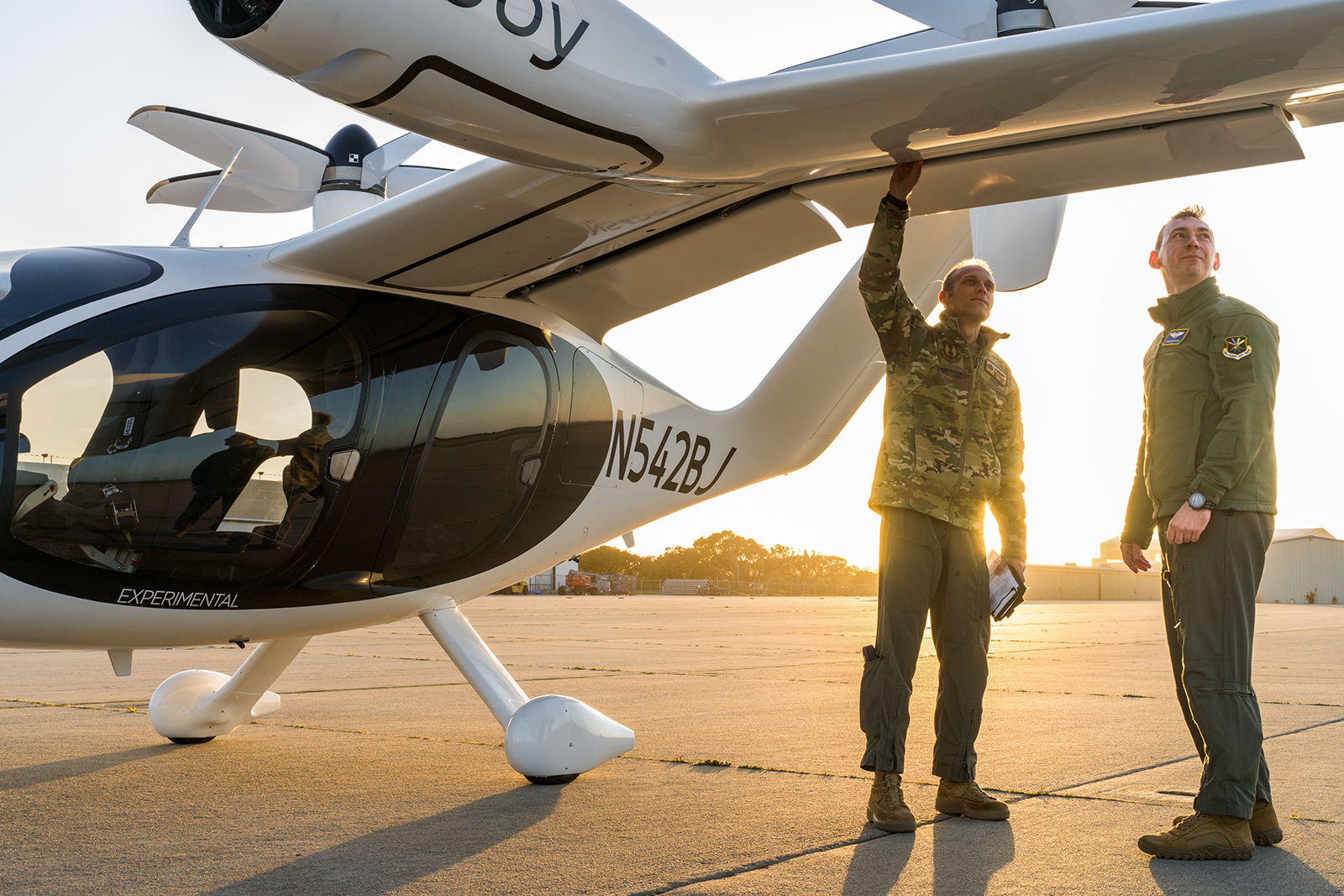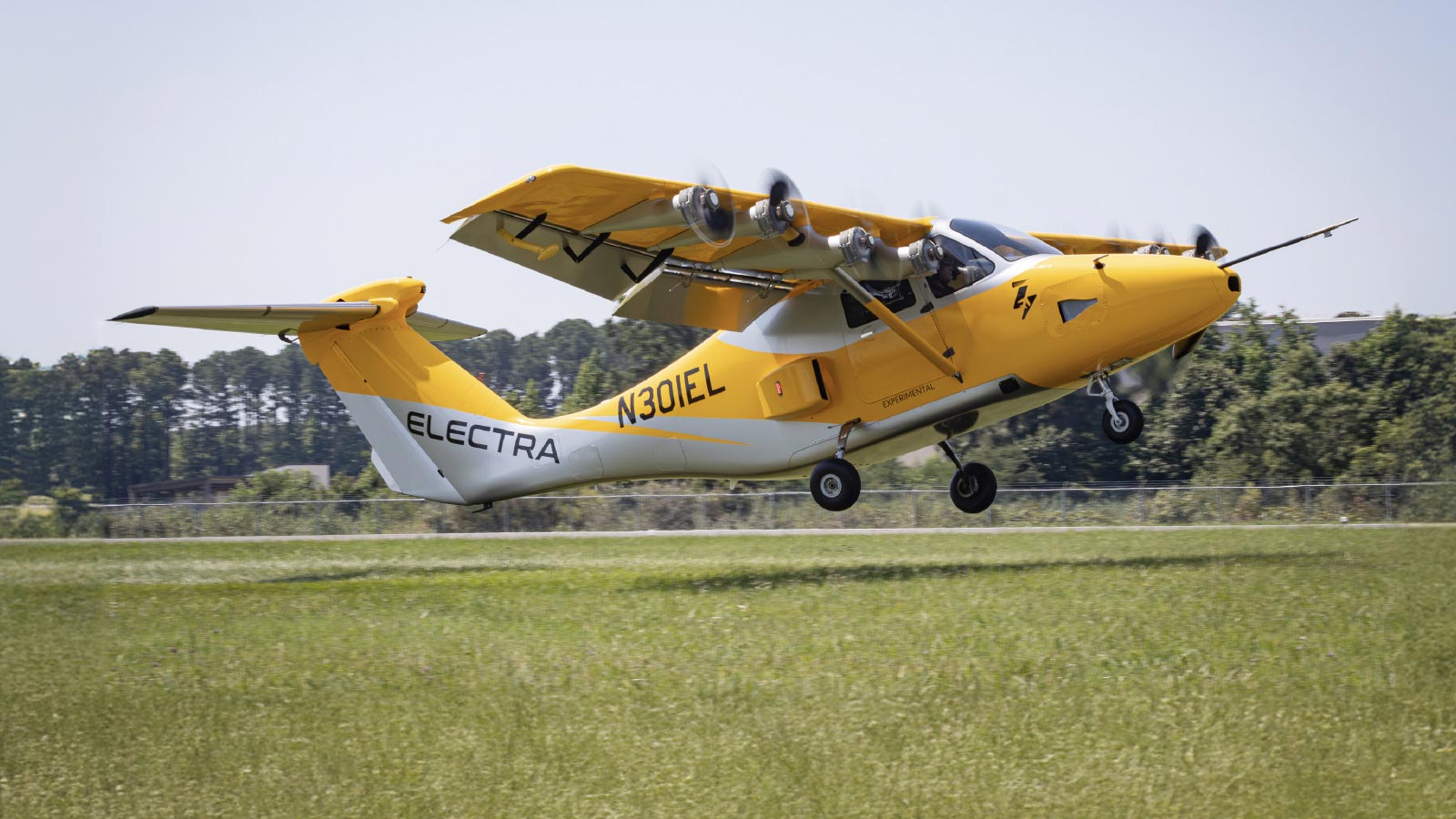Stay Up to Date
Submit your email address to receive the latest industry and Aerospace America news.
Agility Prime, the U.S. Air Force’s small electric aircraft program, has adjusted its research focus toward hybrid-electric aircraft and autonomous flight in the belief that vehicles with these attributes will be most likely to make it across the figurative valley of death between research flights and acquisition of operational aircraft.
Under the 4-year-old program, companies developing electric air taxis mainly for civilian services have been paid to send experimental versions of their wares to various flight ranges, where Air Force pilots or contractors fly them. The goal is to “prime” commercial markets to produce such aircraft or related equipment for the military.
The leader of Agility Prime, Acting Branch Chief Jacob Wilson, updated a crowd on the program’s progress at the National Advanced Air Mobility Industry Forum that I attended in September in Springfield, Ohio, where Agility Prime conducts test flights at Springfield-Beckley Municipal Airport. The program is part of AFWERX, the Air Force Research Laboratory’s innovation arm with a site at Wright-Patterson in Dayton, Ohio, and four other locations around the country.
Wilson identified hybrid-electric powertrains and autonomy as “key enablers” for military applications. Hybrid-electric aircraft contain a combustion engine that, depending on the design, either charges the battery during flight or generates electricity that is delivered to motors that turn propellers. They offer greater range than purely electric designs.
I asked Wilson to elaborate during a follow-up video call. He told me that based on his conversations with pilots and commanders from the Air Force and other branches, the services have become more interested than ever in “transformative vertical lift,” a term that includes concepts for battery-powered aircraft, hybrid-electric and those that would be powered by hydrogen fuel cells. Of those: “We expect that there might be a quicker transition path for hybrid-electric” into military service, he said.
He is wary of the so-called valley of death, the figurative chasm that sometimes traps promising defense technologies because no potential customer has identified a real-world need or requirement that can be met with it.
“It is our perception that there may be emerging requirements [for hybrid-electric] that we don’t have to push so hard for,” Wilson said.
This emphasis doesn’t mean Agility Prime is done with purely battery or hydrogen-powered concepts, just that he believes those technologies may take longer to study before they can be integrated into military fleets.

Wilson said Agility Prime reports regularly to several Air Force commanders and to other branches of the military about the program’s findings. It also receives updates on guidance from those commanders about what they want or need in emerging aircraft technology.“It has been an evolving conversation, I would say, since I came on the program in 2022,” he said. “We have completed a lot more analysis than we initially had in the early years — specifically catered toward some use cases.”
Regarding the promise of electrification, whether in pure or hybrid form, “I would say internal sentiment [within the services] is a lot more positive than it was in 2022.” Sentiments are also shifting because companies including Joby Aviation and Archer Aviation, whose purely electric prototypes have been flown under Agility Prime contracts, are advancing toward receiving FAA type certificates by 2025, he added.
A military branch can self-certify an aircraft, meaning it doesn’t have to wait for FAA to issue a type certificate, but Wilson said they would rather not duplicate any work being done by the companies to prove airworthiness to FAA.
Regarding battery-only aircraft, their range might be limited to about 240 kilometers. That means they might be limited to transporting cargo relatively short distances between facilities, carrying equipment or maintenance personnel from one location to another within a base or range, or to ferrying VIPs around urban areas like Washington, D.C. There may also be a niche in special operations for quiet, low-flying transport of personnel, but “there isn’t much I can say about that,” Wilson said.
In the civilian world, he said, this limited range would be fine for urban air taxis, but longer range is generally preferable for the military because in many cases the services must deliver supplies, equipment and personnel from safer locations to field outposts. That’s why a hybrid-electric aircraft may be preferred. A gas engine can extend range or boost payload capacity. For example, Virginia company Electra, which has a contract with Agility Prime, said its hybrid-electric, short-takeoff-and-landing Goldfinch demonstrator has a range of 800 km. Electra announced in September that the Goldfinch had taken off and landed in distances as short as 46 meters in test flights conducted under the company’s Agility Prime contract. The intent was to demonstrate that the aircraft could ferry supplies to troops “in contested environments where traditional airstrips may be unavailable or compromised.”
Other companies developing hybrid-electric propulsion or aircraft under Agility Prime contracts are Ampaire of Long Beach, California; H3X of Louisville, Colorado; VerdeGo Aero of Daytona Beach, Florida; and LiquidPiston of Bloomfield, Connecticut.
With battery-electric only, “we’re still bridging the gap” between demonstrating what the aircraft are generally capable of and the range and/or payload needs of the operators, Wilson said.
Regardless of the use case, fully electric or hybrid-electric aircraft would be cheaper to operate than conventional aircraft because they would require no fuel or less fuel and would have less downtime for maintenance, he said. If such aircraft are also autonomous, that would result in more savings and frees a pilot to do something more important, he added.
Overall, Agility Prime has become more selective about signing contracts with companies they’ve never worked with. “I’d say the bar is higher than it may have been in, say, 2021 because we’re familiar with the space, we’re familiar with the technologies,” Wilson said. “A clean sheet aircraft, for example, is going to get a lot more scrutiny now.”
About paul brinkmann
Paul covers advanced air mobility, space launches and more for our website and the quarterly magazine. Paul joined us in 2022 and is based near Kennedy Space Center in Florida. He previously covered aerospace for United Press International and the Orlando Sentinel.
Related Posts
Stay Up to Date
Submit your email address to receive the latest industry and Aerospace America news.




